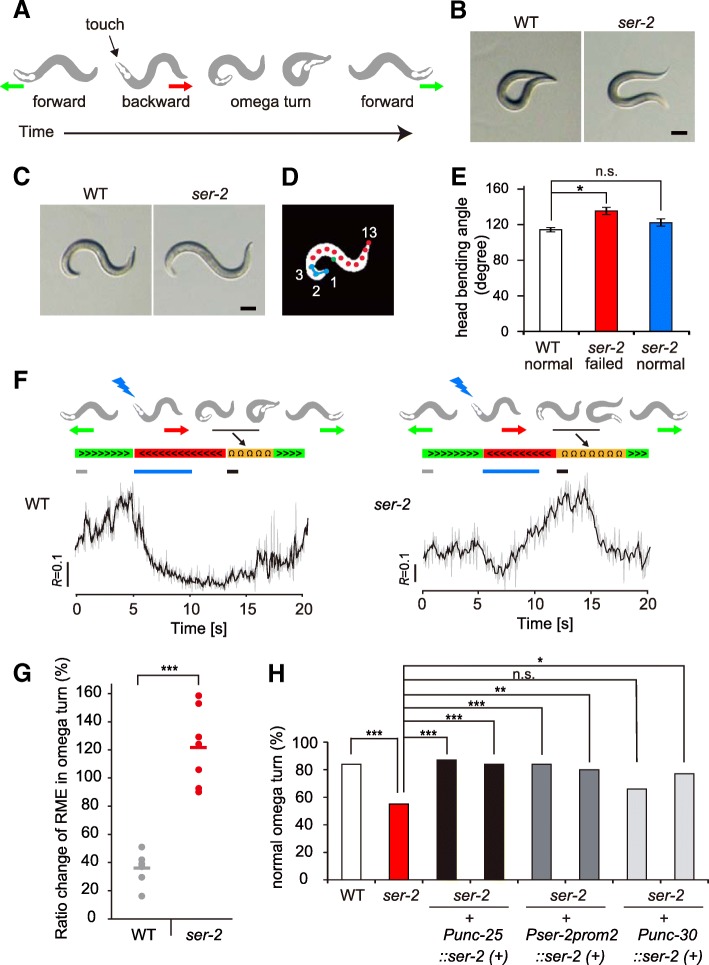Fig. 5.
SER-2 signaling in RME is involved in omega turn behavior. a An anterior touch induces a backward escape response accompanied by an omega turn. b Representative images of omega turns in WT and ser-2 mutant worms. A WT animal deeply bends and touches its head to the tail (closed omega turn), but the ser-2 (ok2103) mutant often exhibits shallow bends and does not touch its head to the tail. Scale bar represents 100 μm. c Representative images of animals initiating omega turns. d Schematic of omega turn analysis. The worm’s body was divided into 12 equal segments and the head-bending angle formed by three points (1–2-3) was calculated. The centroid is indicated by a green circle. e Quantitative analysis of mean head-bending angle. Ser-2 (ok2103) mutant animals exhibit shallow head bends when they failed to close omega turns. n = 17 each. **P < 0.01, *P < 0.05, one-way ANOVA with Tukey’s test. Error bars, SEM. f Calcium dynamics of RME during optogenetically evoked escape behavior. Periods of forward movement, backward movement, and omega turns are indicated by green, red, and orange bars, respectively. Illumination with blue light is indicated by blue bars. g Quantitative analysis of the fluorescence ratio changes of RME in the initial phase of an omega turn from WT (gray) and ser-2 (ok2103) (red) worms. To calculate the fluorescence ratio changes of an omega turn, imaging data for 1 s periods in the forward movement (gray bar) and in the initial phase of the omega turn (black bar) in panel F were used. Individual data and averaged data of fluorescence ratio change are indicated by circles and lines, respectively. ***P < 0.001, Student’s two-tailed t-test. h Transgenic rescue experiment of the omega turn phenotype in the ser-2 (ok2103) mutant. The success rate of omega turns was evaluated in each strain (n = 100). A normal omega turn was defined as an omega turn in which the tip of the nose touches the tail. ***P < 0.001, **P < 0.01, *P < 0.05, n.s. = not significant, Chi-squared test and Bonferroni test

